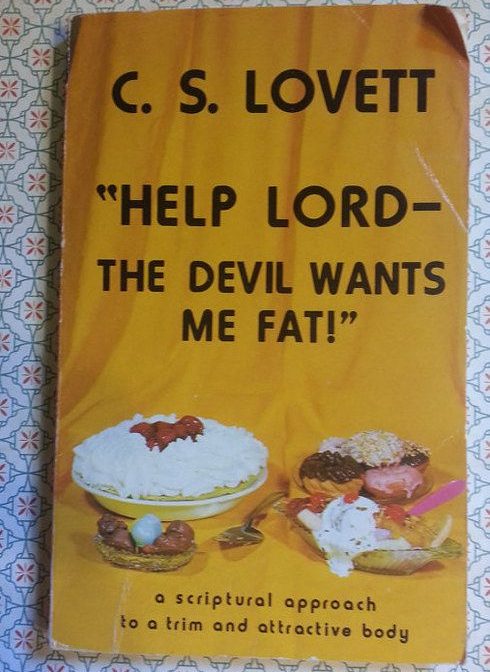Healthy eating and healthy diets have always been a popular, if contentious topic. In today’s age of information overload, never has the concept had so many interpretations. Many of us have been around long enough to have heard so many differing opinions and conflicting advice, that we’re often questioning what a healthy diet is, anyway. When I was at school, we briefly learned about the food pyramid, and that too, has had a varied history over the years. Over the decades, before embracing body positivity, diet culture was riddled with insane advise from smoking yourself thin, to the grapefruit diet and I read something disturbing about ingesting tapeworms.

Do NOT follow this advice. 
Sweet, but not sound. 
You cannot pray away cream buns.
There is a dizzying array of ‘healthy eating’ philosophies. Take your pick from low-carb, low-fat, low-calorie, high-protein, high-fat, sugar-free, gluten-free, grain-free, dairy-free, paleo, keto, fasting, plant-based, raw foods, whole foods, organic foods, vegan, vegetarian, fruitarian, pescatarian, or even eating for your blood group. Not to mention the raft of detoxes and belief-based diets.
It can be exhausting.
The way we consume food has radically changed over the years, from the types of foods available, to the preparation of foods and ready-made options, even the concept of meal time has shifted for busy on-the-go families. So when you’re trying to keep your food intake in check, whether for weight, gut health, or overall trying to consume the best, nutritionally viable foods to fuel your lifestyle, what is the best approach?
One of the best and most consistent methods seems to hold true throughout the noise. Slow, steady and consistent lifestyle changes over fad diets and radical shifts. If food is a big part of your culture, and the way you connect in your life, often small changes are better. Overall, it is often the best approach to avoid foods that don’t look like foods. In this vein, sugar and chemical-laden foods that are highly process or have an ingredients list that looks like a phone book are best avoided. As is avoiding popular advice from the times preceding when phone books were actually a thing. It is also important to note that we are not all created equal. So, one size really doesn’t fit all when it comes to your ideal diet. Learn to listen to your body, it will tell let you know in no uncertain terms once you tune in.
Instead of giving up things you love, you might consider, swapping it out with a healthier or more natural version. Finding out what works for you can be a process. We’ve complied a list of some easy and still enjoyable food and lifestyle substitutes, that can create a healthier approach to what we put in our bodies.
Food Swaps
- Rice/noodles in a stir fry for veg
- Grain fed beef for grass fed
- Margarine for butter
- Soft drink for soda water + citrus
- Fruit juice for 100ml of juice + soda water
- Dark chocolate instead of regular chocolate (Start at 70% cocoa and work your way up to 90%, which is quite bitter and can be an acquired taste).
- Blended cooking oils for healthier oils
- Peanut butter for whole or organic nut butter
- Crackers for crudités
- Net fished tuna for line caught tuna, or even better, smaller fish that are less likely to contain mercury
- Not-so-free-range eggs for actual free range eggs
Other Swaps
- Plastic water bottle for glass
- Coated cooking surfaces for stainless steel
- Regular meetings for walking and talking meetings
- Chemical cleaning products for vinegar
- Regular house paint for no/low VOC paint
If you’re going to embark on a new ‘healthy eating’ plan, it helps to to keep an accurate diary of everything you eat and drink, and how you’re feeling: energy, mental clarity, mood, gut happiness and weight. And, don’t give up! Give it a good month of consistency to really let everything that you’re doing have an impact.











